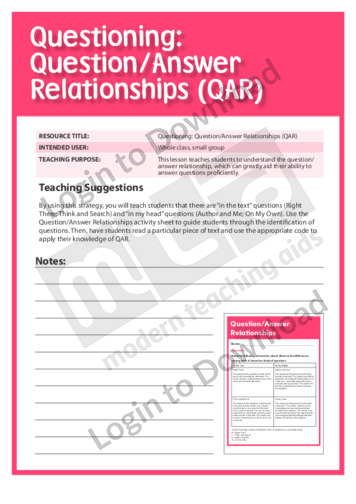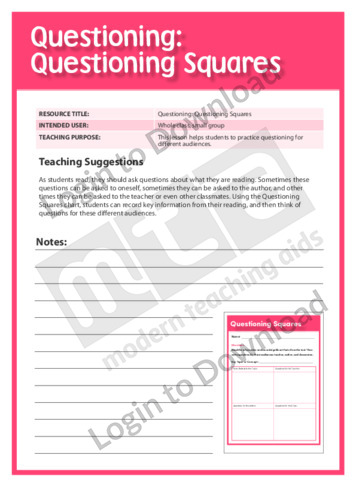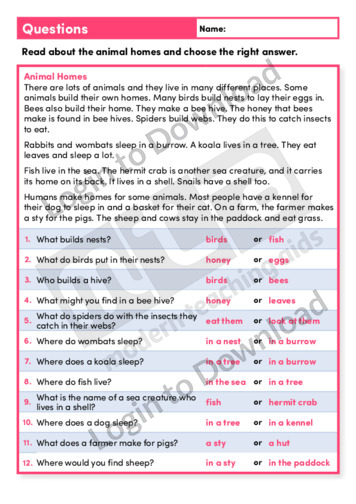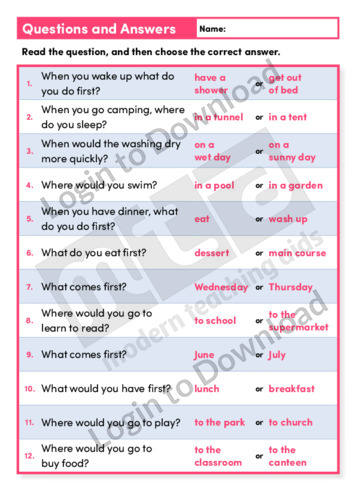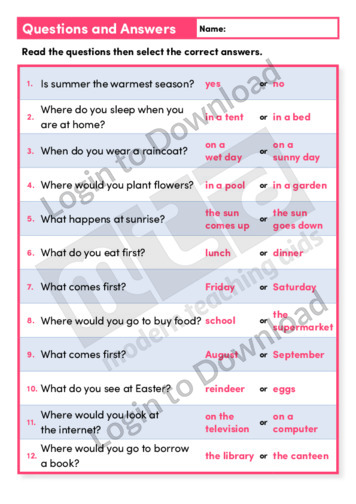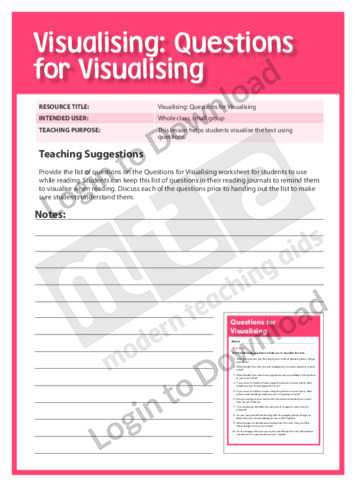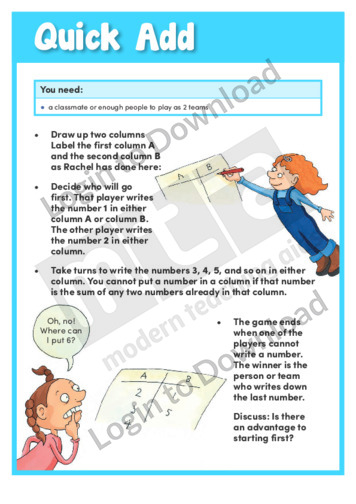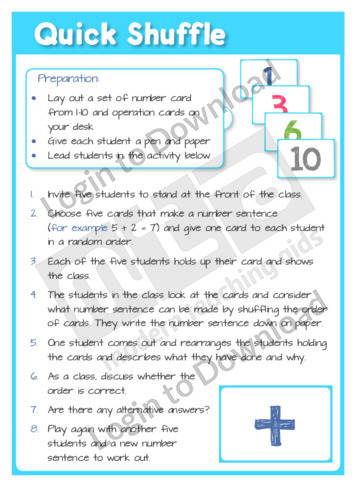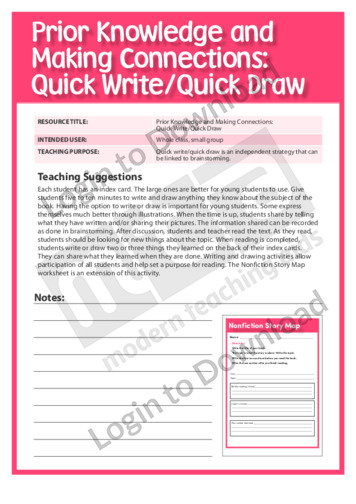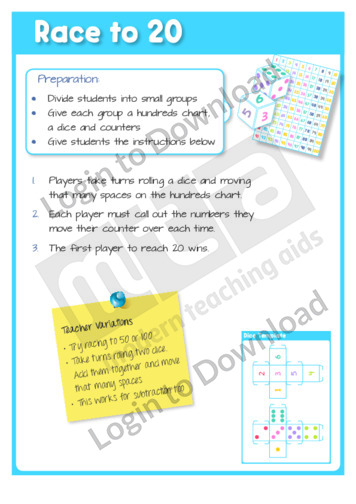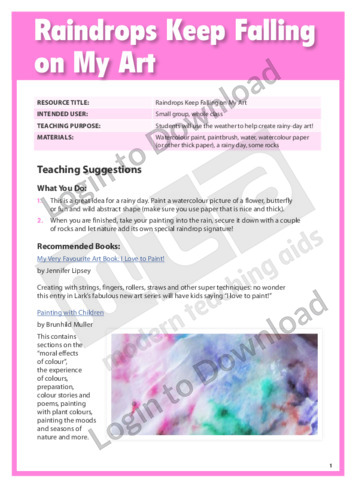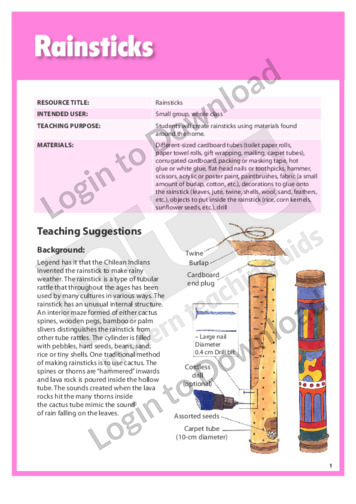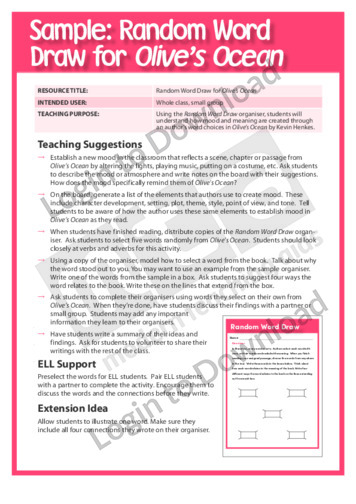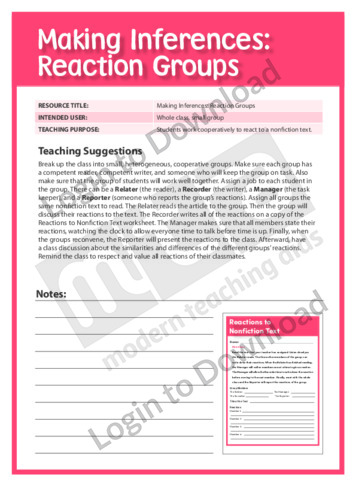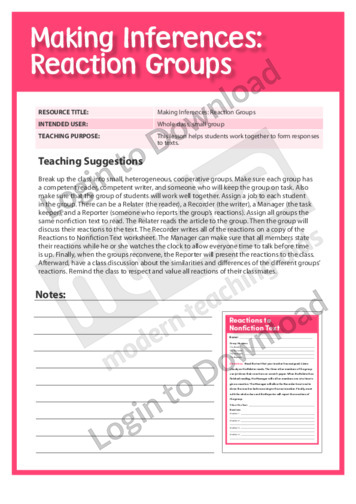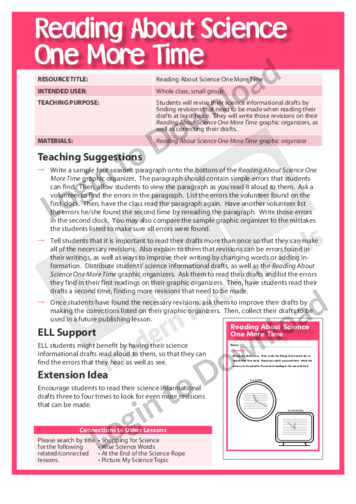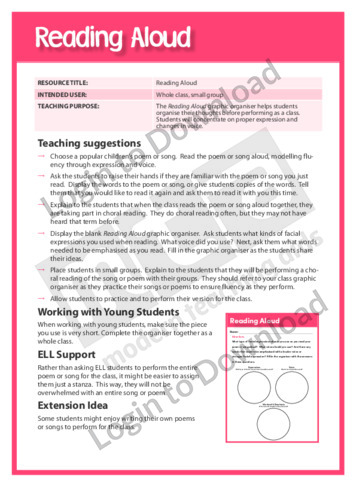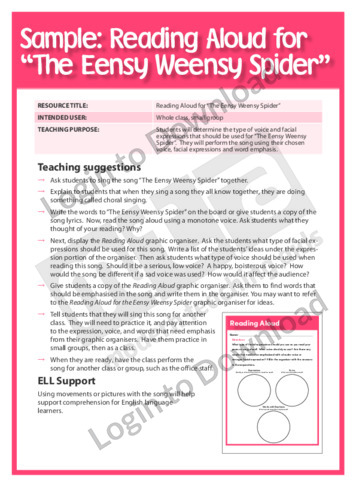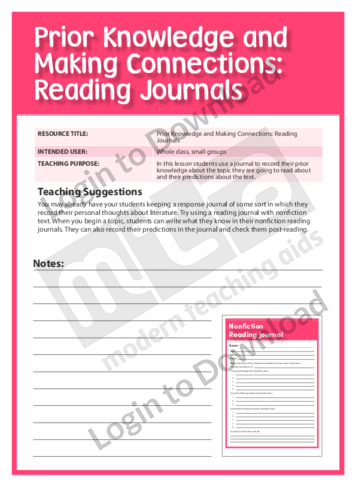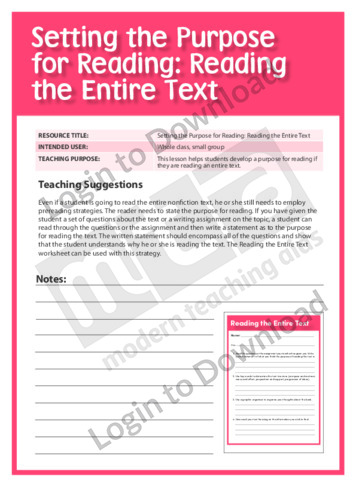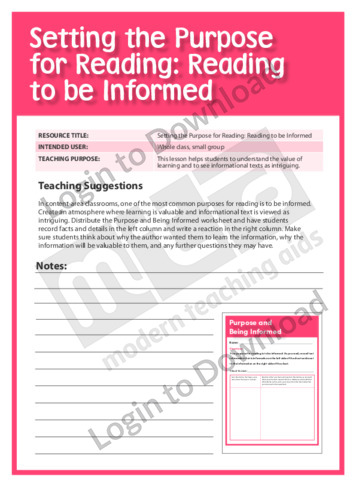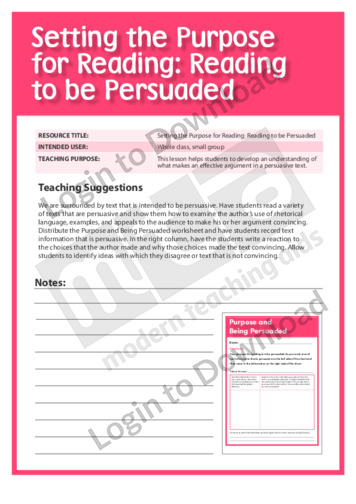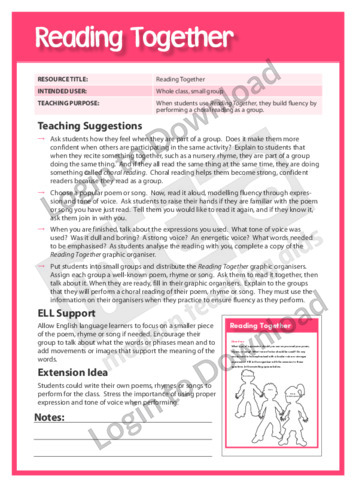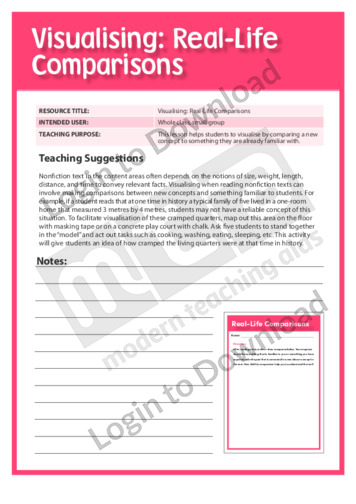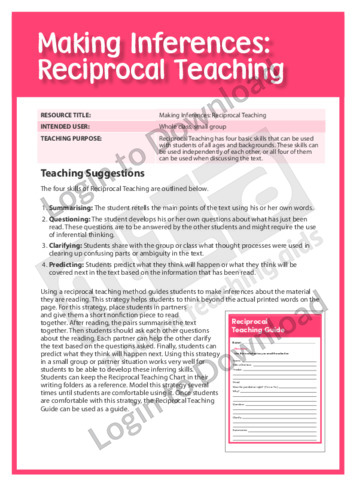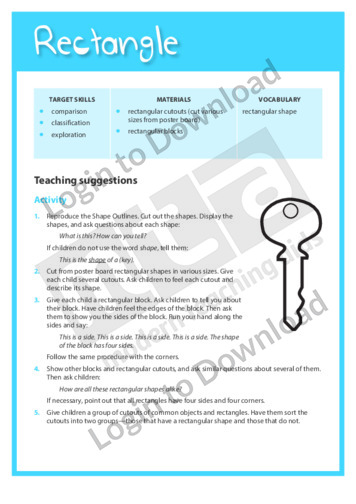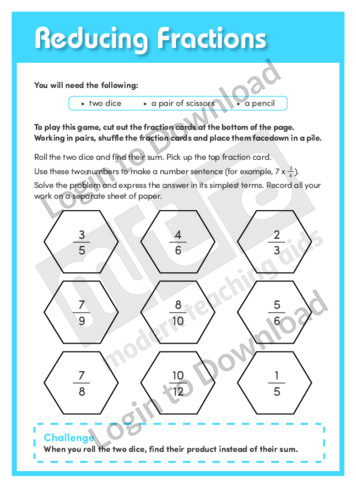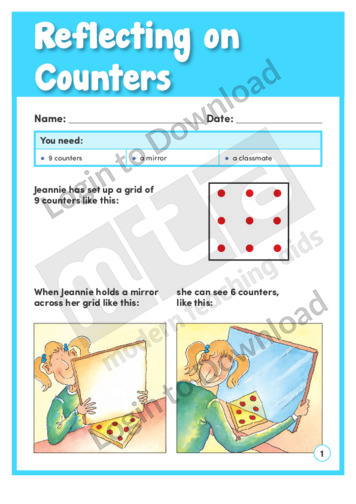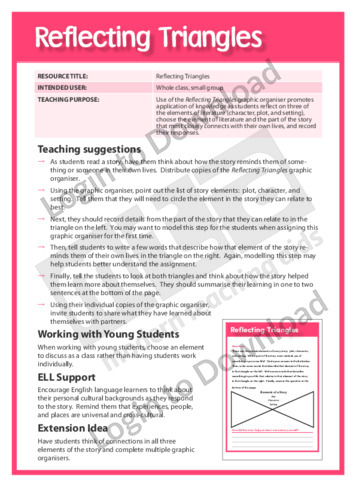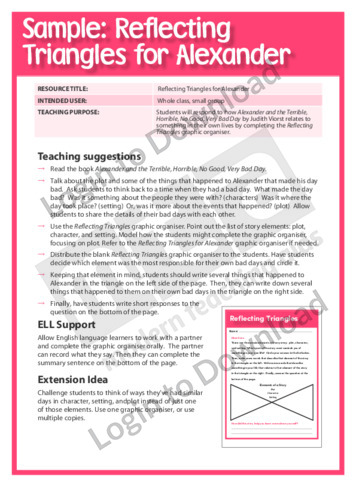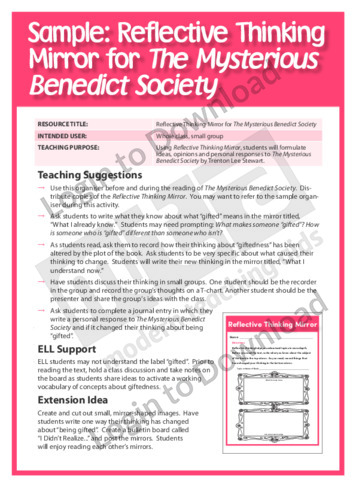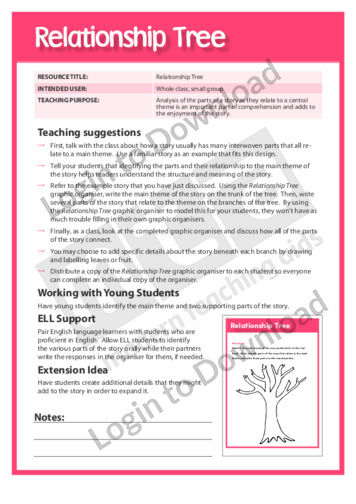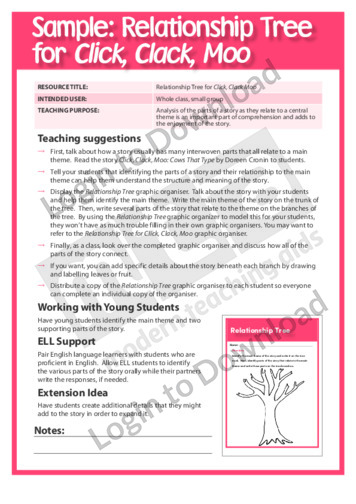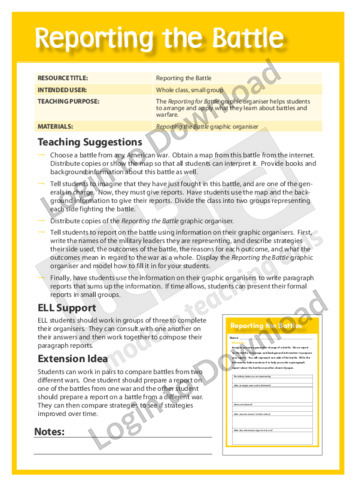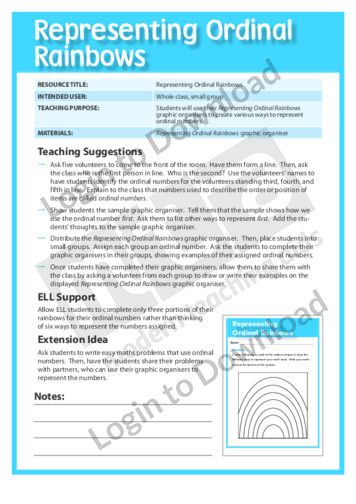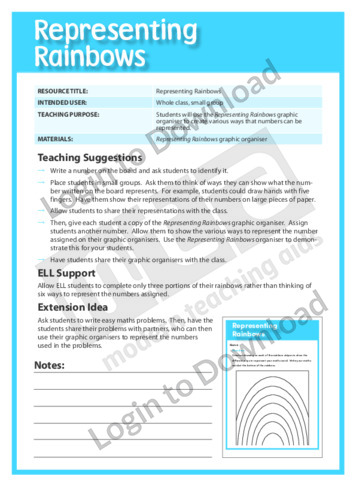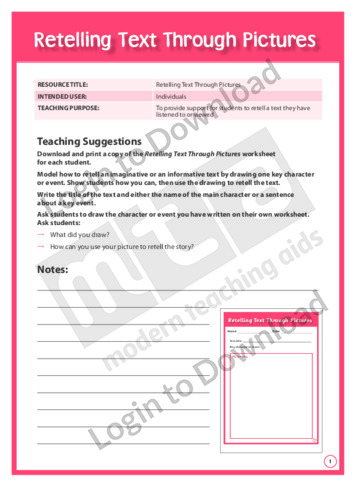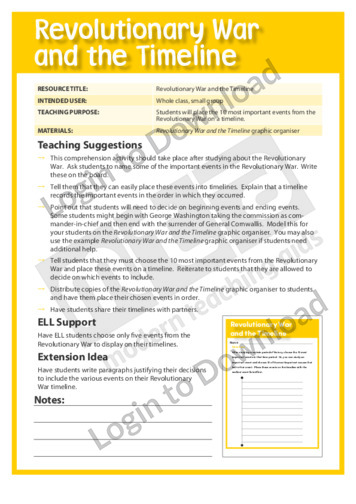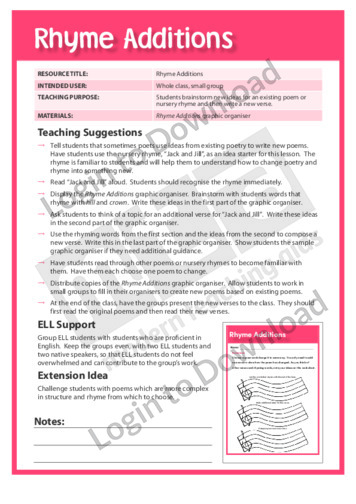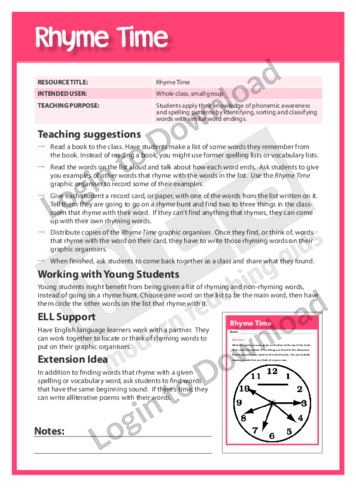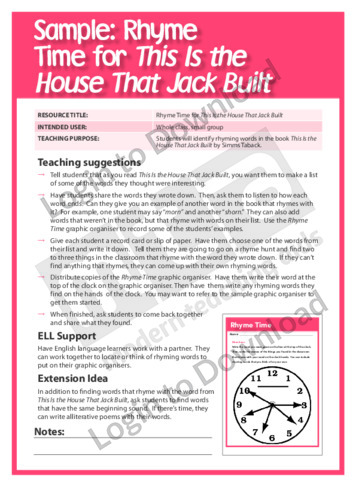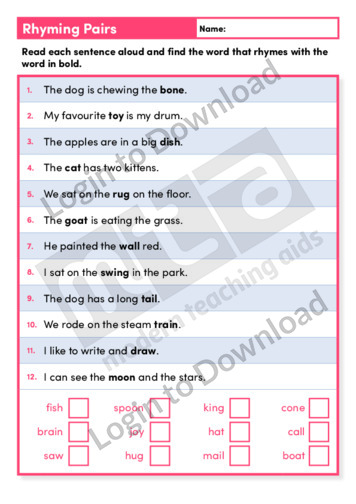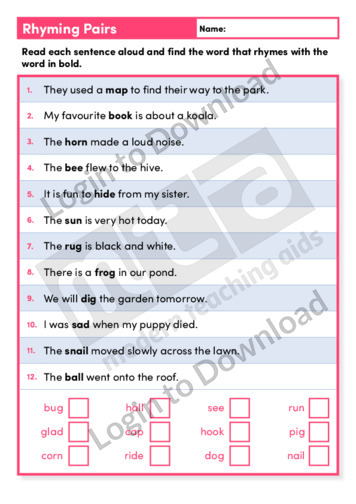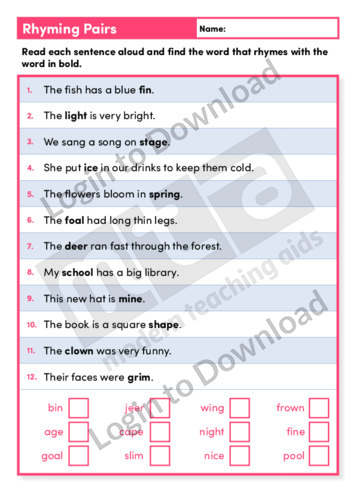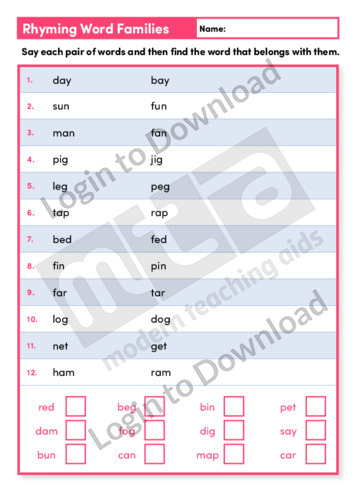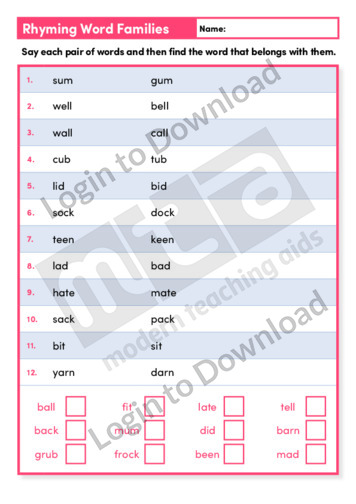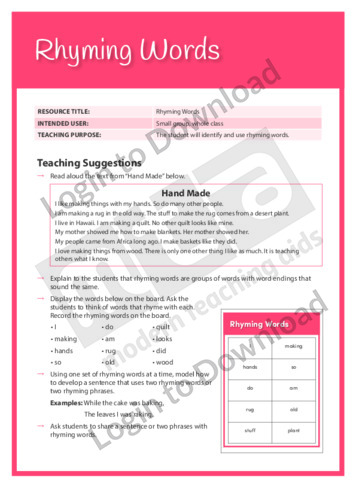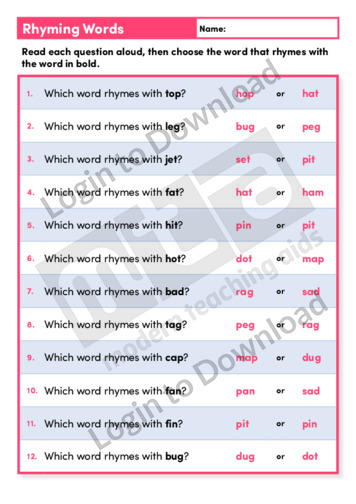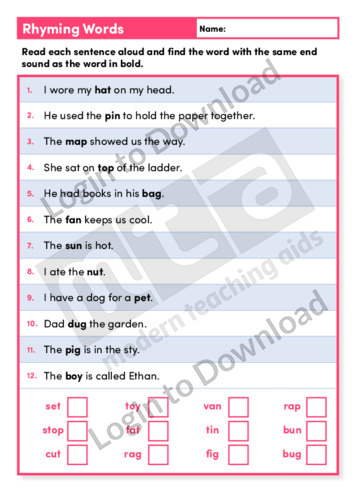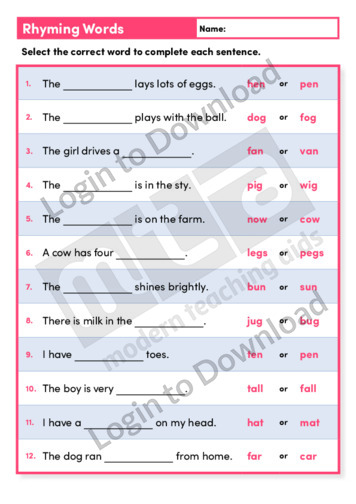This content area reading learning activity, ‘Question/Answer,’ helps students achieve their purpose for reading. It has students generate questions before reading and answer the questions as they go through the text.
This content area reading learning activity, ‘Question/Answer/Reaction,’ helps students achieve their purpose for reading. It has students generate questions before reading, answer the questions as they go through the text, and record their reaction to the answers after reading.
This content area reading learning activity, ‘Questioning and Inferring,’ helps with building comprehension. It is aimed at helping students make connections while they read a nonfiction text by encouraging them to ask questions and make inferences.
This content area reading learning activity, ‘Questioning Squares,’ helps students practice questioning for different audiences. It has students record key information from their reading, and then think of questions for different audiences.
This reading activity, ‘Questions’ provides opportunities for practice with meanings of simple words through asking ‘What can…do’ questions?
This reading activity, ‘Questions’ provides opportunities for practice with reading about animals and their homes, then answering comprehension questions.
This reading activity, ‘Questions and Answers’ provides opportunities for practice with reading questions and selecting an appropriate answer.
This reading activity, ‘Questions and Answers’ provides opportunities for practice with answering general knowledge questions.
This content area reading learning activity, ‘Questions for Visualising,’ helps students visualise the text using questions. It provides students with a list of questions for visualising that they can keep in their reading journals to remind them to visualise when reading.
This learning activity, ‘Quick Add’, provides instructions for a strategy game for two players or teams. The game helps to reinforce basic addition facts. The accompanying teaching notes include suggestions for supporting learning and further exploration.
This maths activity, ‘Quick Shuffle’ develops basic maths skills by encouraging students to practise addition, subtraction, multiplication and division as part of an engaging game played as a class. It includes a set of numeral cards from 1-10 as well as operation symbol cards.
This content area reading learning activity, ‘Quick Write/Quick Draw,’ helps activate students’ prior knowledge about a topic. It is aimed at helping students set a purpose for reading by having them participate in writing and drawing activities.
This maths activity, ‘Race to 20’ develops basic maths skills by encouraging students to practise place value as part of a game in small groups. It includes a hundreds chart, six-sided dot and numeral dice templates and counters to be distributed to each group.
This art project ‘Raindrops Keep Falling on My Art’ enables students to create rainy-day art. It is aimed at developing students’ awareness of basic artistic procedures. It provides a list of materials, easy-to-follow step-by-step art instructions and a list of recommended art books.
This art project ‘Rainsticks’ enables students to create rainsticks using household materials. It is aimed at developing students’ awareness of basic artistic procedures. It provides a list of materials, easy-to-follow step-by-step art instructions, a diagram and a list of recommended art books.
This graphic organiser, ‘Random Word Draw’ helps students to visually piece together otherwise unrelated information.
This graphic organiser, ‘Random Word Draw for Olive’s Ocean’ helps students understand how mood and meaning are created through an author’s word choices in Olive’s Ocean by Kevin Henkes.
This content area reading learning activity, ‘Reaction Groups,’ helps students work cooperatively to react to a nonfiction text. It has students record each group member’s reaction to a text and then share and discuss the reactions with the class.
This content area reading learning activity, ‘Reaction Groups,’ helps students work together to form responses to texts. It is aimed at showing students that there can be many different reactions to a text and encouraging them to work cooperatively in groups.
This graphic organiser, ‘Reading About Science One More Time’ supports students in editing and revising by re-reading and reviewing their science writing.
This graphic organiser, ‘Reading Aloud’ helps students to organise their thoughts before performing as a class, concentrating on correct expression and changes in voice.
This graphic organiser, ‘Reading Aloud for the Eensy Weensy Spider’ asks students to determine the type of voice and facial expressions that should be used for The Eensy Weensy Spider, then perform the song using their chosen voice, facial expressions and word emphasis.
This content area reading learning activity, ‘Reading Journals,’ helps students practice making predictions and activates their prior knowledge. It has students use a journal to record what they already know about the topic they will be reading about as well as their predictions about the text.
This content area reading learning activity, ‘Reading the Entire Text,’ helps students develop a purpose for reading if they are reading an entire text. It has students write a statement before reading as to the purpose for reading the text, which should show that the student understands why he or she is reading the text.
This content area reading learning activity, ‘Reading to be Entertained,’ helps to instil in students a love of reading. It is aimed at showing students that text contains information that is highly interesting and motivating.
This content area reading learning activity, ‘Reading to be Informed,’ helps students understand the value of learning. It is aimed at showing students that learning is valuable and informational text is intriguing.
This content area reading learning activity, ‘Reading to be Persuaded,’ helps students develop an understanding of what makes an effective argument in a persuasive text. It is aimed at teaching students to examine the author’s use of rhetorical language, examples and appeals to the audience to make his or her argument convincing.
This graphic organiser, ‘Reading Together’ helps students to build fluency by performing a choral reading as a group.
This content area reading learning activity, ‘Real-Life Comparisons,’ helps students visualise by comparing a new concept to something they are already familiar with. It is aimed at deepening students’ understanding of a topic or concept by encouraging them to visualise when reading nonfiction texts.
This Beginning Maths activity, ‘Rectangle’ encourages students to explore, compare and classify the attributes of a rectangle and locate rectangular items in the classroom.
This fractions learning activity, ‘Reducing Fractions’ asks students to practise simplifying fractions.
The learning activity ‘Reflect on This’ contains a variety of short problems for students to solve and discuss. Students need to use a range of strategies to support their thinking. The engaging problems involve paper folding, exploring symmetrical images on a calculator, changing lengths, and the distribution of pocket money. An answer sheet is provided …More
This learning activity, ‘Reflecting on Counters’, helps students to develop the concept of symmetrical reflection using a mirror and a grid of counters. An answer sheet is provided and includes accompanying teaching notes with suggestions for supporting learning and further exploration.
This graphic organiser, ‘Reflecting Triangles’ promotes application of knowledge as students reflect on three of the elements of literature and connect them with their own lives.
This graphic organiser, ‘Reflecting Triangles for Alexander’ asks students to respond to how Alexander and the Terrible, Horrible, No Good, Very Bad Day by Judith Viorst relates to something in their own lives.
This graphic organiser, ‘Relationship Tree’ asks students to identify the main theme and central ideas of a story.
This graphic organiser, ‘Relationship Tree for Click, Clack, Moo’ asks students to identify the main theme and central ideas in the story Click, Clack, Moo: Cows That Type.
This graphic organiser, ‘Reporting the Battle’ helps students to arrange and apply what they learn about battles and warfare.
This graphic organiser, ‘Representing Ordinal Rainbows’ supports students to represent ordinal numbers in different ways.
This graphic organiser, ‘Representing Rainbows’ asks students to represent numbers in different ways.
This reading comprehension activity, ‘Retelling Text Through Pictures’ supports language development by encouraging students to retell a text they have listened to or viewed. It is aimed at developing students’ awareness of retelling through a fun activity in which the students will retell an imaginative or informative text by drawing one key character or event.
This graphic organiser, ‘Revolutionary War and the Timeline’ asks students to place events from the revolutionary war in chronological order on a timeline.
This graphic organiser, ‘Rhyme Time’ asks students to apply their knowledge of phonemic awareness and spelling patterns by identifying, sorting and classifying words with similar word endings.
This graphic organiser, ‘Rhyme Time for This Is the House That Jack Built’ asks students to identify rhyming words in the book This Is the House That Jack Built by Simms Taback.
This phonics activity, ‘Rhyming Pairs’ encourages students to read each sentence aloud and find the word that rhymes with the word in bold.
This phonics activity, ‘Rhyming Pairs’ encourages students to read each sentence aloud and find the word that rhymes with the word in bold.
This phonics activity, ‘Rhyming Pairs’ encourages students to read each sentence aloud and find the word that rhymes with the word in bold.
This phonics activity, ‘Rhyming Pairs’ encourages students to read each sentence aloud and find the word that rhymes with the word in bold.
This phonics activity, ‘Rhyming Word Families’ encourages students to say each pair of words and then find the word that belongs with them.
This phonics activity, ‘Rhyming Word Families’ encourages students to say each pair of words and then find the word that belongs with them.
This Writing Traits activity, ‘Rhyming Words’ encourages students to identify and use rhyming words.
This phonics activity, ‘Rhyming Words’ encourages students to read each question aloud and then choose the word that rhymes with the word in bold.
This phonics activity, ‘Rhyming Words’ encourages students to read each question aloud and then choose the word that rhymes with the word in bold.
This phonics activity, ‘Rhyming Words’ encourages students to read each sentence and find the word with the same end sounds as the word in bold.
This reading activity, ‘Rhyming Words’ provides opportunities for practice with completing sentences through selection of the correct word.
It�s that easy!


